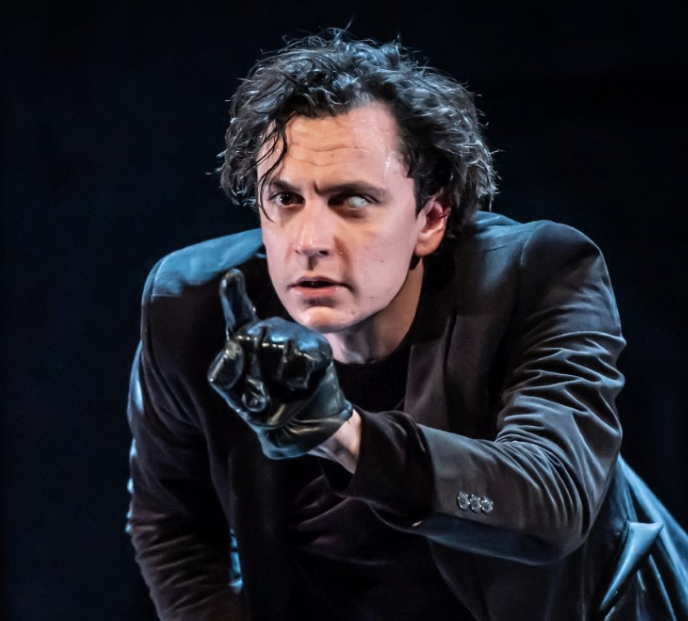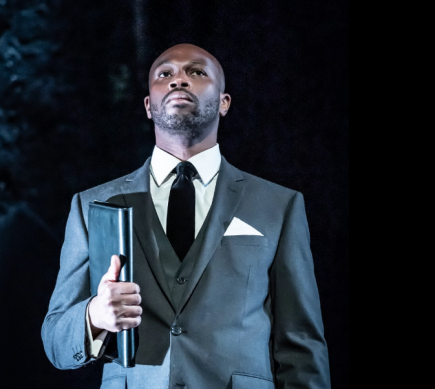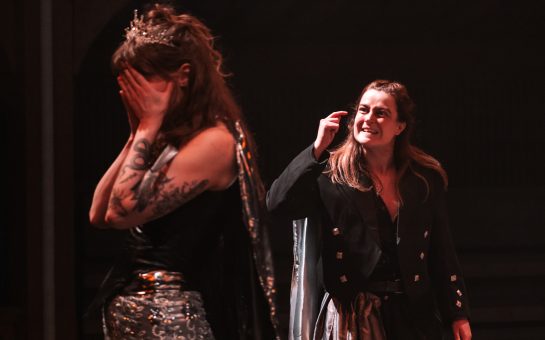Spider-like and wretched, Tom Mothersdale’s Richard III practically crawls across the stage. Every body movement signals his grotesque nature.
The power-hungry, self-hating Richard of Gloucester and his murderous path to the throne are the focus of this Shakespearean tragedy, which works best when it acts as a psychological exploration of its evil protagonist.
Through a performance that is heavily reminiscent of Heath Ledger’s Joker, Richard is a sick blend of madness and hatred. He’s greasy and repugnant, spitting and licking various body fluids that shoot across the stage.
But his creepiness is juxtaposed with moments of well-placed comic timing that make it hard not to revel a little in his amorality. Since the deterioration of the play’s world comes from his twisted machinations it’s fitting that he should be so unnerving, yet compelling, to watch.
We’re introduced to the political situation of the play, directed by John Haidar, with an expository and bloody scene that’s thrown in from Henry VI.
From there Richard’s seductions, betrayals, killings, and inevitable downfall are sped through, with the nuances of the courtly drama largely sidelined.

GREASY AND REPUGNANT: Tom Mothersdale brilliantly portrays the villainous Richard III
The propulsive pace is welcome but it does mean the twisting plot is even more confusing, and the more thoughtful aspects of the text such as its political intrigue and deep questions about fate and morality are sacrificed for a character study.
The focus on Richard’s inner turmoil is emphasised by the gothic dungeon-like set design, full of smoke and swerving mirrors like the basement of a haunted house.
The mirrors fracture the images of the characters, highlighting the dangerous narcissism and duplicity of the royal court.
The ghosts of Richard’s victims also appear in the mirror, but rather than being unnerving they are mostly just odd, at one point inexplicably blowing white dust into Richard’s face.
The play, sketched as it is around Richard, lacks the rich symbolism and otherworldly elements of the original text.

TENSE AND EERIE: The play shines in many respects, from the sound design to cast members like Stefan Adegbola – Richard’s right-hand man Buckingham
These are replaced with somewhat weirder theatrical choices – such as a flashing red light and blaring noise that sounds whenever someone is stabbed, like they’ve given a wrong answer in a game show.
In general though, the excellent sound design subtly creates a tense, eerie atmosphere.
While many Shakespeare renditions put a different period spin on the story, such as the film of Richard III which was set in the 1930s, this play goes for a more generic, timeless approach.
Characters wear suits which work for some but make others look like office managers, while Lady Hastings sports bright pink hair.
The rest of the cast provide some fantastic performances, particularly Stefan Adegbola who plays Richard’s right-hand man Buckingham, but it’s the ruined king’s deformed sense of morality and reckless ambition that captures us.
From Richard’s master manipulations to his toothless end, Mothersdale’s unhinged performance anchors the play. His cruelty is riveting, but nothing that surrounds him on stage matches it.
Richard III is showing at HOME until Saturday 4 May.



